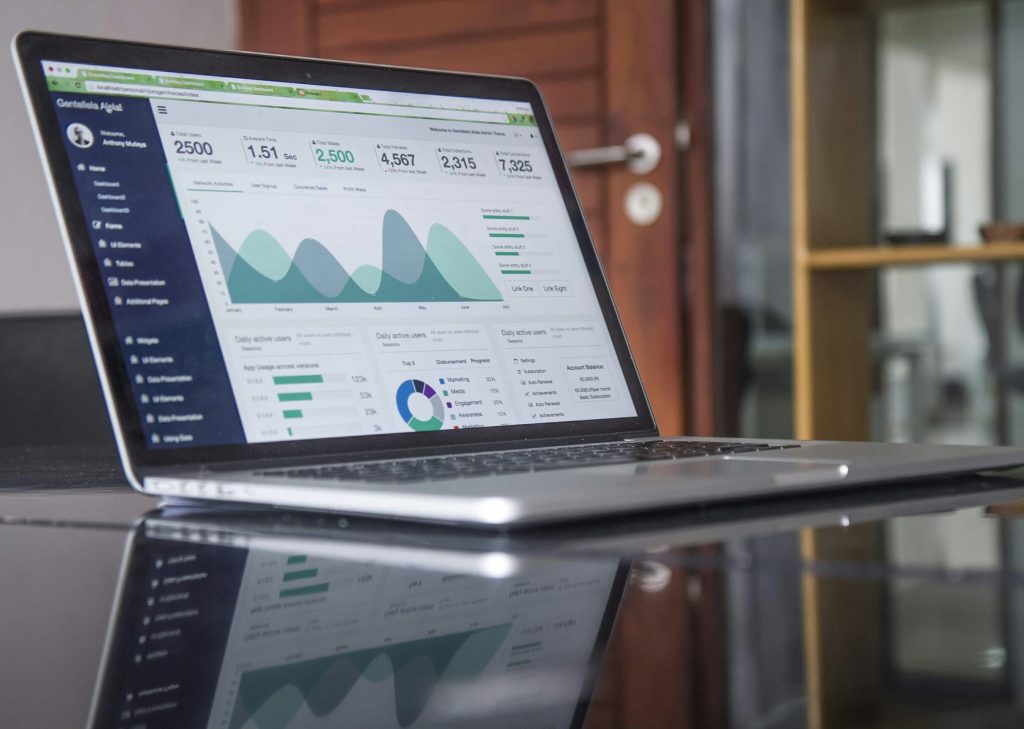The modern vacation rental landscape is competitive, fast paced, and in a constant state of flux. Short term rental data, and the tools that help you harness it, are now essential.
Your business growth and revenue increasingly depends on how well you understand your market, your guests, and the inner workings of your operation. Whether you’re managing two listings or scaling a portfolio of two hundred, having access to clear, actionable insights can transform your business.
From setting dynamic nightly rates to tracking performance against local competitors, data gives you a clearer picture of what’s working and what isn’t. It also helps you spot fixable issues, uncover hidden growth opportunities, and fine-tune key performance indicators (KPIs) to align with your goals.
With the rise of AI, automation, and integrated platforms, managing short-term rentals is becoming more sophisticated and more efficient at the same time.
Platforms like Rentals United’s Analytics Premium make it easier than ever to get clear, centralized data analysis to help you make smarter, faster decisions.
In this article, we’ll explore five practical ways data can help short-term rental property managers grow, optimize, and future-proof their businesses.
1. Use market data to understand local demand
Short-term rental markets can vary dramatically not only between cities but even between neighbourhoods. Understanding local demand patterns and being able to access real-time and historical data on occupancy rates, booking lead times, and guest demographics helps you fine-tune your approach.
Analysis tools allow you to zoom in on micro-market data and compare your listings to similar properties in your area. This helps identify trends early and adapt strategies before your competitors do.
By reviewing booking data and review content, you can learn what types of guests you’re attracting. It might be families, solo travelers, or remote workers, and if you know who’s booking your property (and when), you can adjust your listing photos, descriptions, and messaging style to appeal to them. Alternatively, you can use this information to become more attractive to demographics who aren’t frequently booking your property, in order to diversify your audience.

The bottom line is that when data guides your decisions, your property becomes more aligned with what your guests are seeking.
Real-world example:
You’re a Lisbon host struggling with winter bookings. Using Analytics Premium, you discover that off-season guests are German remote workers. You respond by creating “work-from-Portugal” bundles, installing ergonomic chairs, and translating your listing into German. Your winter occupancy improves, and reviews soar.
2. Optimize revenue with dynamic pricing tools
One of the clearest ways data drives growth is through revenue optimization. Instead of setting flat or seasonal prices manually, data-driven property managers use dynamic pricing tools to continuously adjust nightly rates based on demand, local events, and competitor rates.
When done right, dynamic pricing can increase your average daily rate (ADR) and overall revenue without lowering occupancy.
Analytics platforms can show you which nights you could have charged more, or which ones you over-discounted. Over time, this helps eliminate guesswork and ensures you’re not leaving money on the table.

Tracking your minimum length of stay settings, cleaning fees, and last-minute discounts across different booking channels can highlight inconsistencies or identify missed revenue opportunities.
Real-world example:
You price a Madrid apartment at €150 per night, based on instinct. After enabling dynamic pricing through Analytics Premium, you see demand spikes during niche festivals and mid-week dips in winter. You optimize accordingly and increase ADR by 20%, boosting overall monthly income.
3. Benchmark against local competitors
How do you know if your occupancy rate is strong, or if you’re underperforming? Benchmarking tools allow you to compare your property’s KPI metrics, such as occupancy, revenue per available night (RevPAR), and booking lead time, against similar properties in your region.
This is really useful to you, because you can select competitor listings based on bedroom count, property type, and location, giving you a realistic view of what’s possible in your market.
You might find that your listing’s revenue is lagging behind others, even with similar occupancy. This could point to pricing issues, amenity gaps, or listing optimization opportunities.
Your ability to track improvements over months or even years gives you a longitudinal view that can help you measure the ROI of your decisions, like renovations, pricing changes, or switching channel strategies.

Real-world example:
You manage six properties in Portland. Your occupancy seems fine—until Analytics Premium shows you’re 15% below local benchmarks. You notice high-performing listings offer 1-night stays and last-minute deals. You adjust, and within three months, your occupancy climbs by 14%.
4. Streamline multi-platform distribution with data integration
Many short-term rental managers distribute their listings across multiple OTAs such as Airbnb, Booking.com, and Vrbo to reach a broader audience. While this increases exposure, managing availability, pricing, and listing content across channels manually can be error-prone and time-consuming.
Using a centralized channel manager helps streamline this process by keeping calendars and rates synchronized in real time. When integrated with a data analytics platform like Analytics Premium, it goes a step further—enabling managers to make distribution decisions based on performance data rather than assumptions.
Instead of applying uniform strategies and promotions across all platforms, managers can adjust strategies based on data such as booking lead times, occupancy trends, or cancellation rates by channel. This leads to more accurate pricing, better alignment with demand, and fewer discrepancies across platforms.
Operationally, linking booking data with automation tools also supports smoother management of turnovers, maintenance, and guest communications.
For example, identifying long gaps between bookings allows you to offer targeted discounts or adjust minimum stay rules, helping to reduce vacancy and improve revenue without extra manual input.
Real-world example:
You manage 18 listings in Edinburgh. Manual updates have caused pricing conflicts during festival season. After implementing Analytics Premium with the Channel Manager, your listings are synced, double bookings are eliminated, and you cut admin time by 20%.
5. Forecast future growth with historical booking data
Looking at year-on-year trends gives you a powerful lens into future performance. Data tools help make forecasting predictions that help you to plan budgets and strategy decisions with more confidence.
Data can help you decide when and where to expand your portfolio smartly. Are two-bedroom units consistently outperforming one-beds in your city? Is occupancy higher in suburban areas than in city centers? These insights can guide new property acquisitions or adaptations to your existing listings. Combining market intelligence with operational tools ensures that your growth is not just ambitious, but sustainable.

Real-world example:
You want to scale from four to ten listings. Using historical data in Analytics Premium, you see family villas outperform luxury studios in your area. You buy a mid-range three-bedroom and market it toward school holiday travel. Six months in, it reaches 85% occupancy.
Getting started with data and analytics
You don’t need to be a technological wizard to benefit from the valuable insights of data analysis. Start small, by looking into these four tips :
- Use a property management system (PMS) that offers analytics dashboards.
- Integrate with dynamic pricing tools.
- Review monthly performance reports.
- Track competitor metrics with benchmarking tools.
Make checking data a habit
Don’t just check your stats when something goes wrong. Build regular reporting and analysis into your monthly workflow. Over time, this habit will lead to sharper decisions and better returns.
Customize insights to your business size
Whether you’re managing five properties or fifty, tailor your metrics to your scale. A smaller operator might focus on occupancy and reviews, while a larger business may track cost per booking and revenue per available room.
Use the best tool for the job
Rentals United’s Analytics Premium is built to serve both ends of the spectrum, giving each manager the tools that matter most to them. It is designed specifically for short-term rental managers, and connects directly with the Rentals United’s Channel Manager, bringing together data and distribution in one seamless ecosystem.
Discover how Analytics Premium can transform your data into growth: Get started